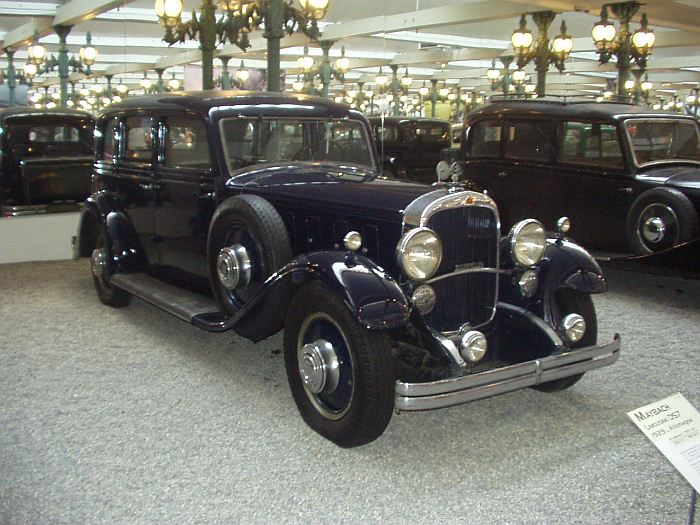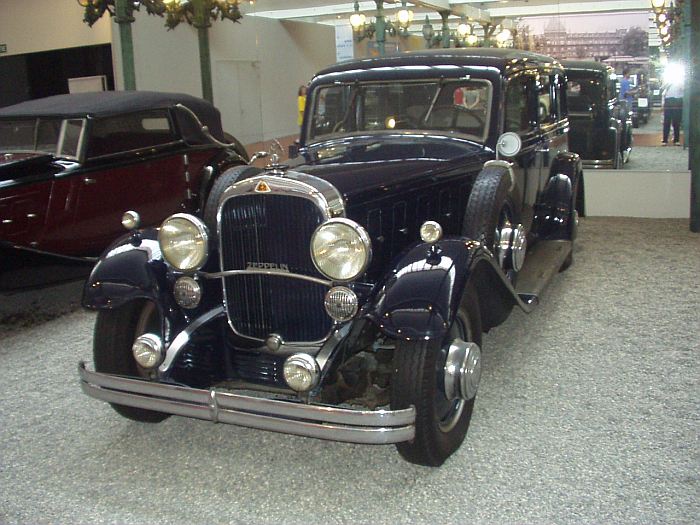Description
The Maybach DS 8 Zeppelin Limousine was one of the most magnificent and technically advanced luxury cars built anywhere in the world before the Second World War. Introduced in 1931 as the successor to the DS 7, the DS 8 represented the absolute peak of Maybach’s engineering capability and stood as Germany’s most prestigious production automobile of the era. Larger, more powerful and more refined than its predecessor, the DS 8 was a flagship designed for royalty, industrial magnates, diplomats and heads of state. It remains one of the most imposing and celebrated luxury cars of the pre-war period.
At the heart of the DS 8 was a colossal 8.0-litre V12 engine, an extraordinary powerplant that ranked among the largest and most sophisticated automotive engines of its time. Producing approximately 200 horsepower in its most refined form, it delivered immense torque and a refined, turbine-like smoothness. The engine’s silken character drew directly from Maybach’s long experience with precision aircraft and airship engines, and it allowed the DS 8 to move the heaviest formal coachwork with ease. Even when burdened with the mass of a full Pullman-style body, the car accelerated quietly, maintained high cruising speeds and delivered a level of mechanical refinement that outclassed nearly all contemporaries.
The chassis was constructed around a massive ladder-style steel frame designed to provide absolute rigidity under the weight of the largest custom bodies. Suspension used long semi-elliptic leaf springs tuned for extraordinary comfort rather than sporting agility. The DS 8 rode with stately composure, absorbing irregularities with quiet confidence and maintaining a dignified, floating character on long journeys. This serenity, combined with the quiet might of the V12, gave the limousine an unmistakable sense of power and authority.
Transmission was handled by Maybach’s advanced dual-range gearbox, which offered both high and low driving ranges. This effectively gave the driver multiple ratios for different conditions without the complexity found in most large cars of the early 1930s. The system provided smoother shifting and greater flexibility, reducing the effort required from a chauffeur and ensuring passengers enjoyed uninterrupted refinement. It was a precursor to the more sophisticated Wandler torque-converter transmissions that would appear later in the decade, and it contributed greatly to the DS 8’s reputation for effortless luxury.
The DS 8 limousine was almost always bodied by Germany’s greatest coachbuilders, including Spohn of Ravensburg, Erdmann & Rossi of Berlin, and in a few rare cases, other top European ateliers. The limousine body style emphasised formality and grandeur, with an upright roofline, large side windows, balanced proportions and long rear doors for dignified entry. Each body was designed entirely by hand, shaped by master craftsmen and tailored precisely to the preferences of the original buyer. Paintwork, chrome detailing and panel fit were executed to the highest possible standard.
Inside, the limousine delivered an atmosphere of exceptional luxury. The rear compartment was the primary focus, often separated from the driver by a division window. Seating consisted of deep armchairs or a full-width bench upholstered in the finest leather or intricately tailored cloth. Polished hardwood veneers covered the cabinetry and window surrounds, while thick wool carpeting and precision-made metal fittings added to the sense of opulence. Amenities commonly included writing tables, smoking sets, vanity mirrors, bespoke lighting arrangements, intercom communication and heater units. Every detail was crafted to the standard of a private yacht or luxury rail carriage.
On the road, the DS 8 delivered the dignified, unhurried performance expected of a top-tier luxury car. The immense V12 provided smooth, relentless power, enabling the heavy limousine to move with calm assurance. The long wheelbase and carefully tuned suspension ensured a plush ride, and the DS 8 remained composed even over poor pre-war road surfaces. Steering was steady and precise given the car’s size, while the large mechanical drum brakes delivered strong stopping capability for the era. The overall experience was one of unmatched refinement and quiet strength, confirming the DS 8 as the apex of German automotive luxury.
Production of the DS 8 Zeppelin was extremely limited due to its extraordinary price and the economic climate of the early 1930s. Only a small number of chassis were built, and each one was commissioned by an elite customer who required a car of exceptional prestige. Surviving examples today are exceedingly rare, often residing in major museums or world-class private collections.
The Maybach DS 8 Zeppelin Limousine remains one of the greatest luxury automobiles ever constructed. It represents the culmination of Maybach’s pre-war engineering, combining vast power, advanced mechanical design and exquisite bespoke craftsmanship in a way few cars have ever matched. Regal, powerful and breathtakingly refined, it stands as an enduring symbol of the golden age of German prestige motoring.

